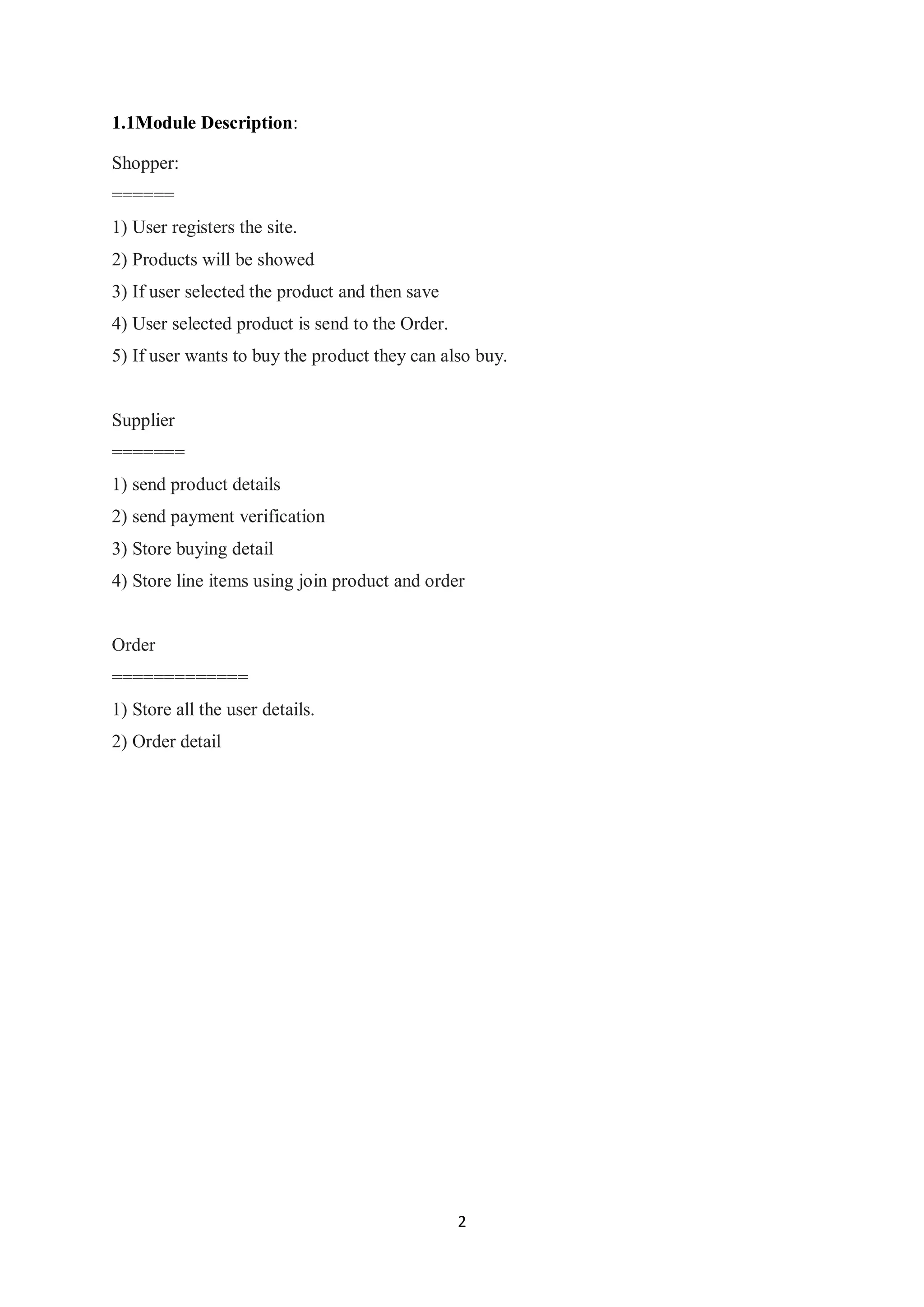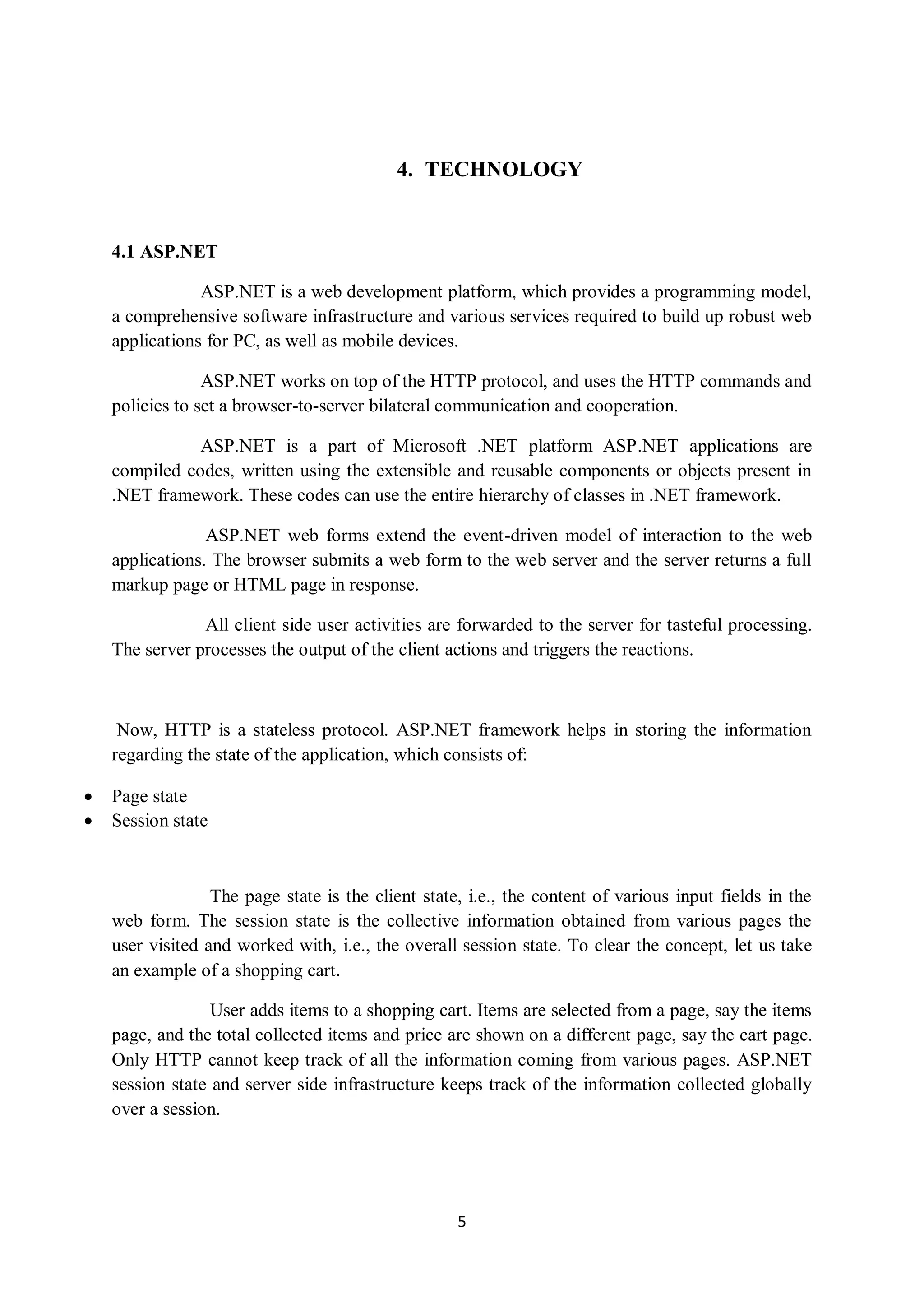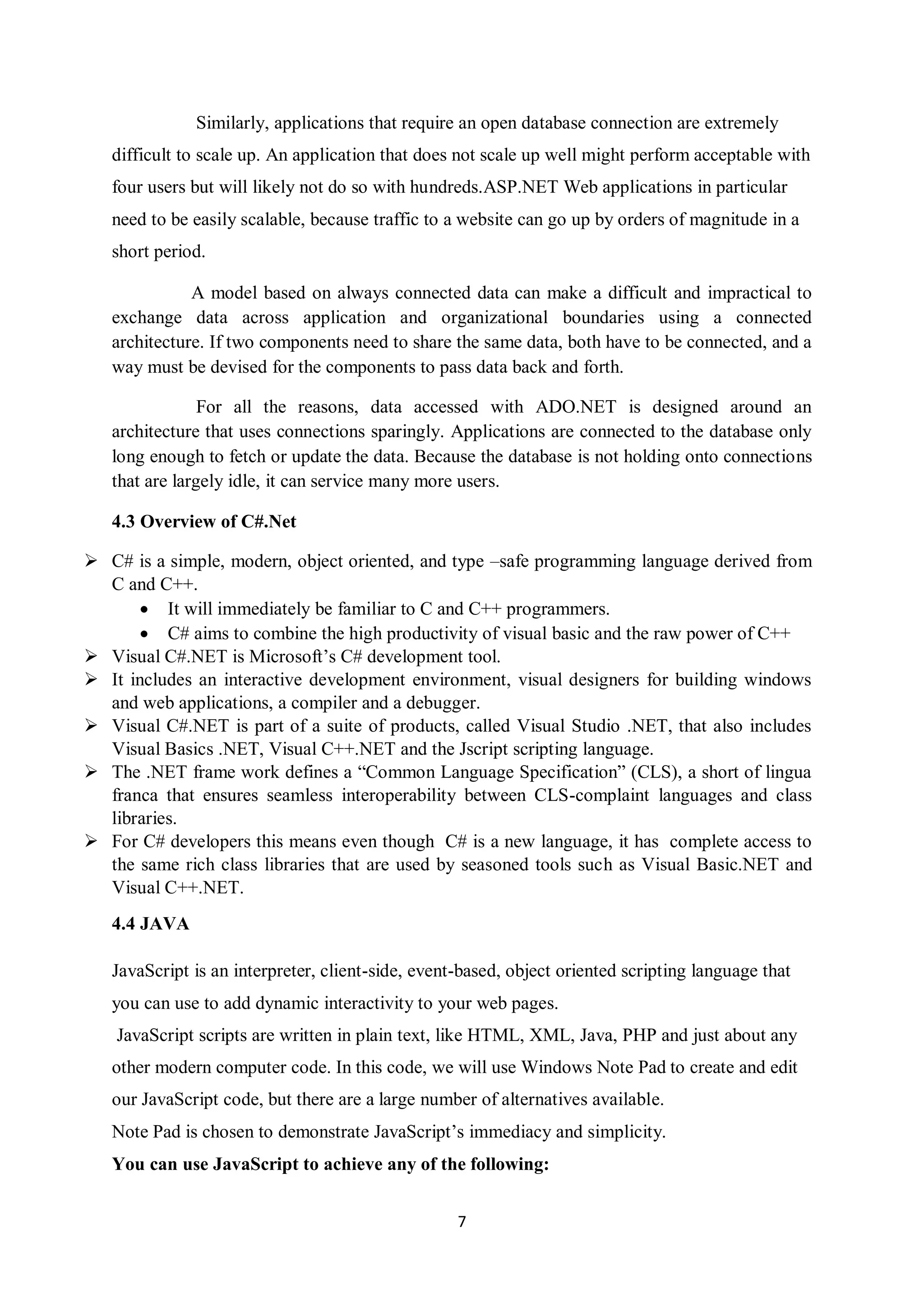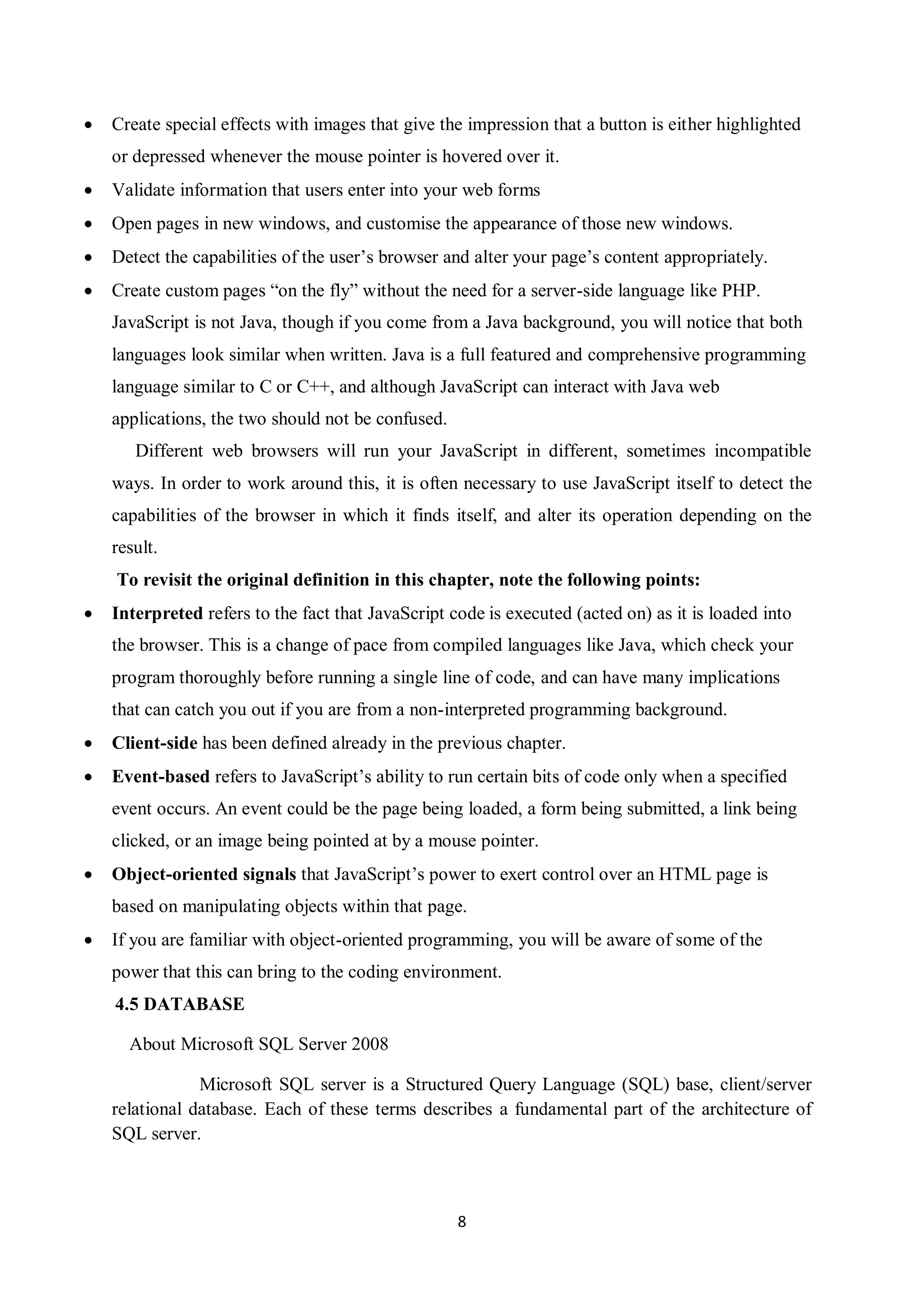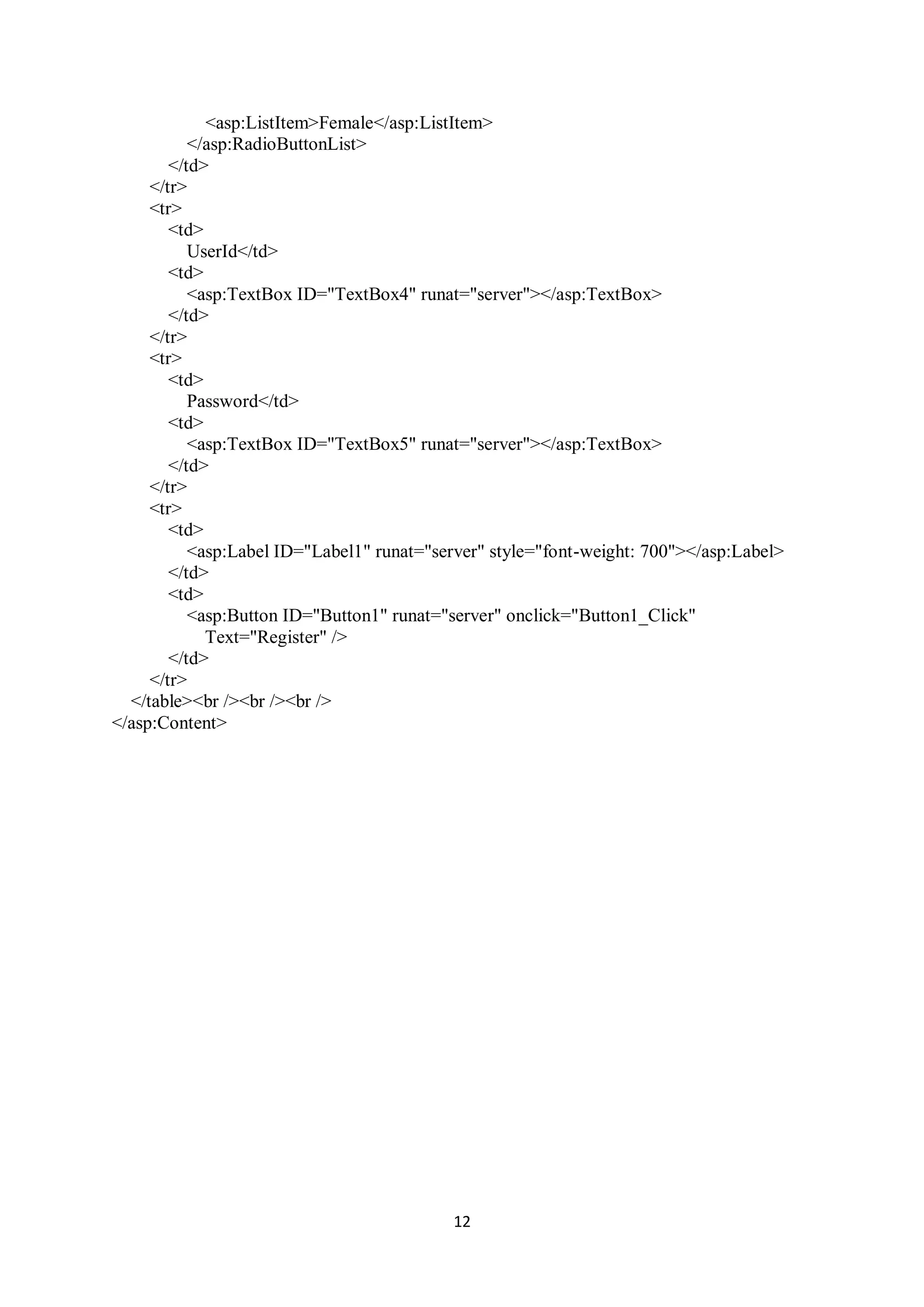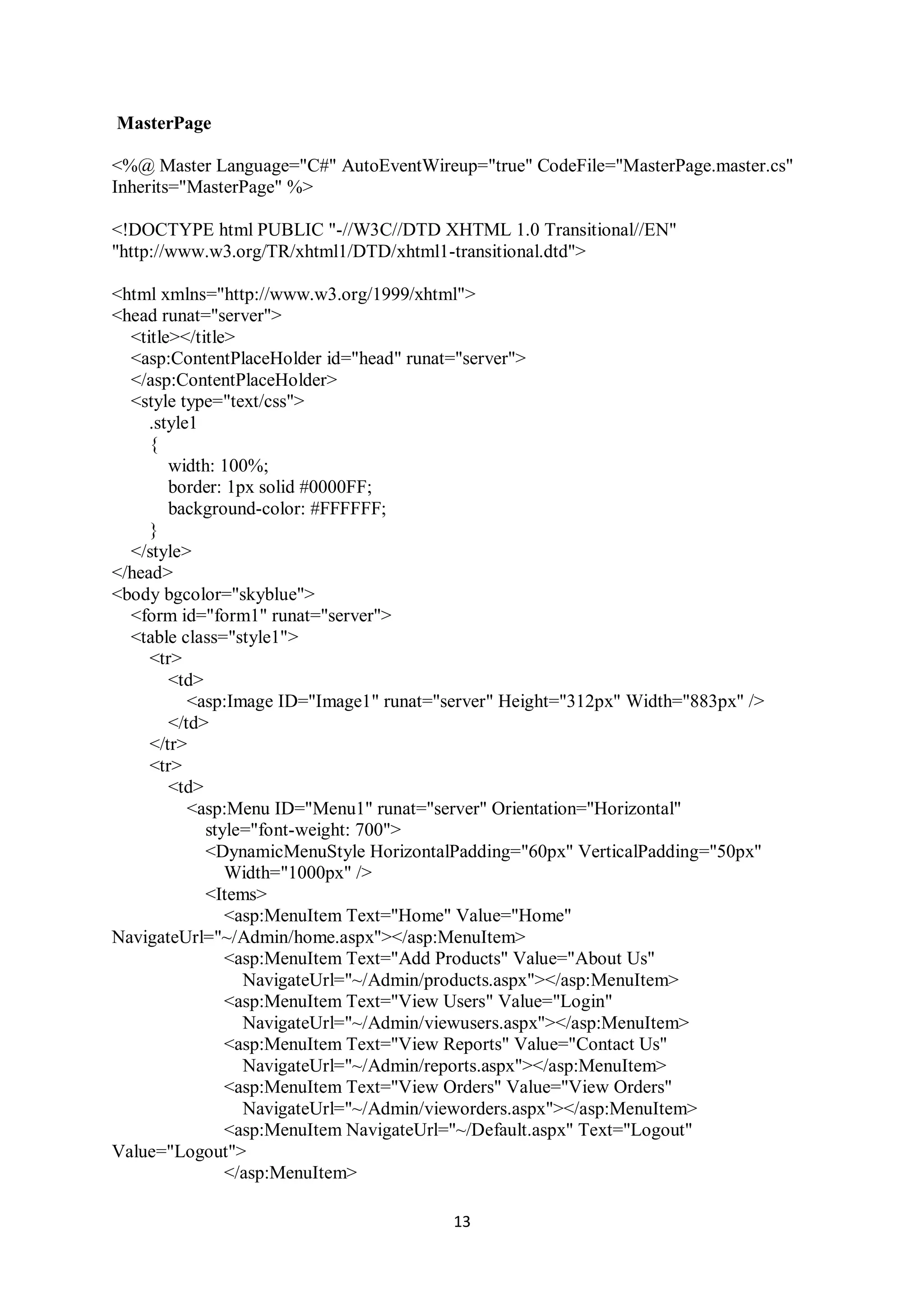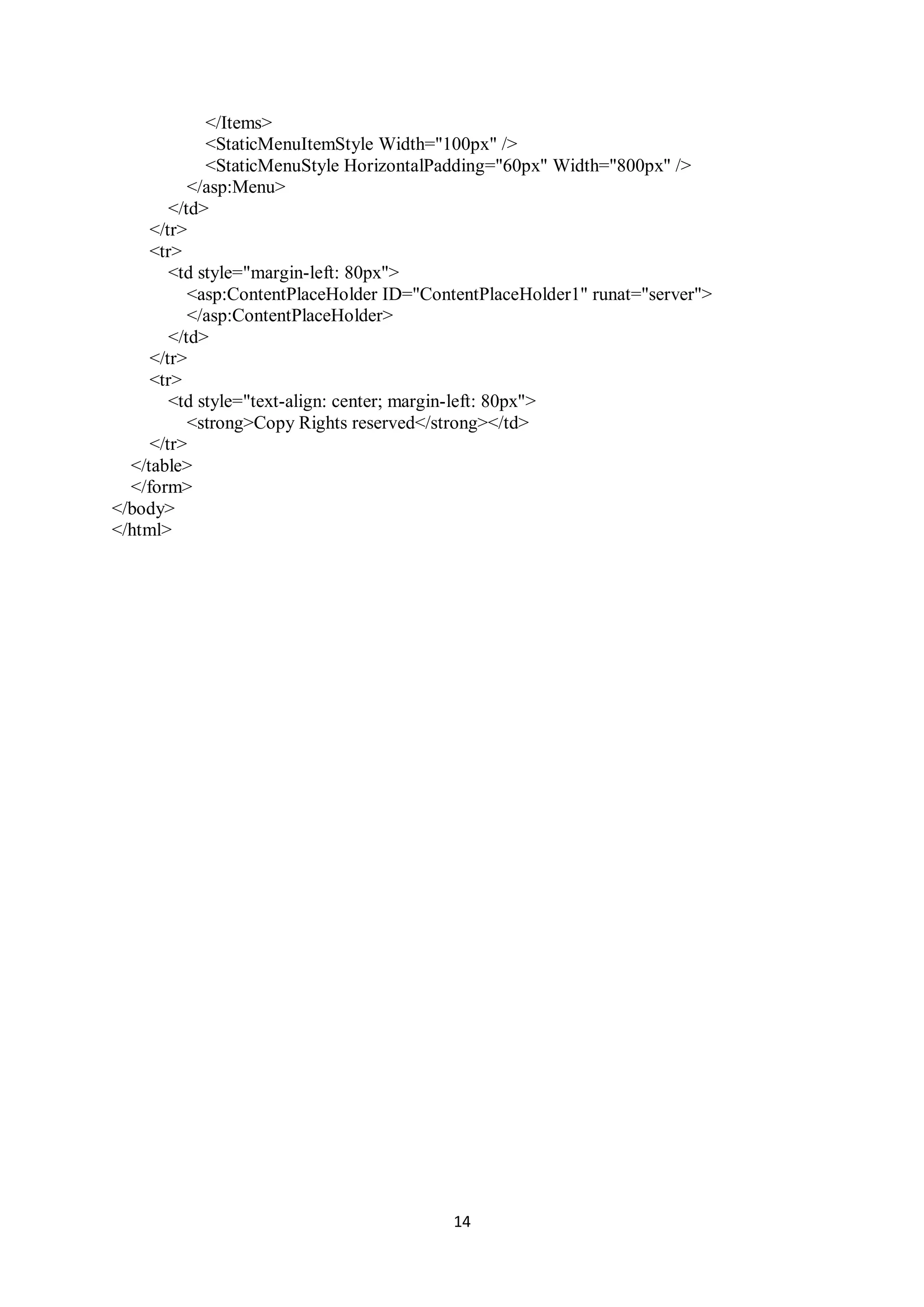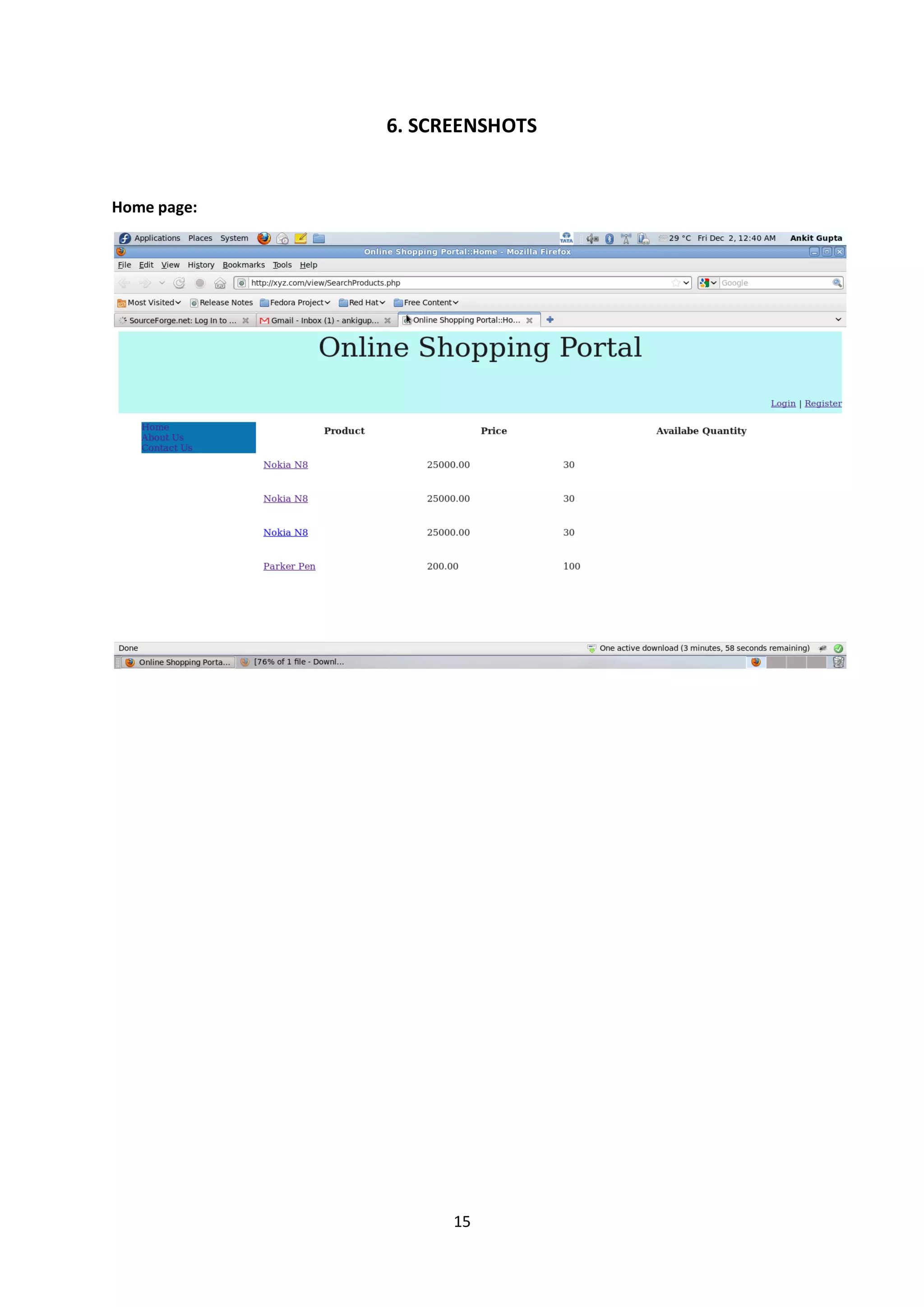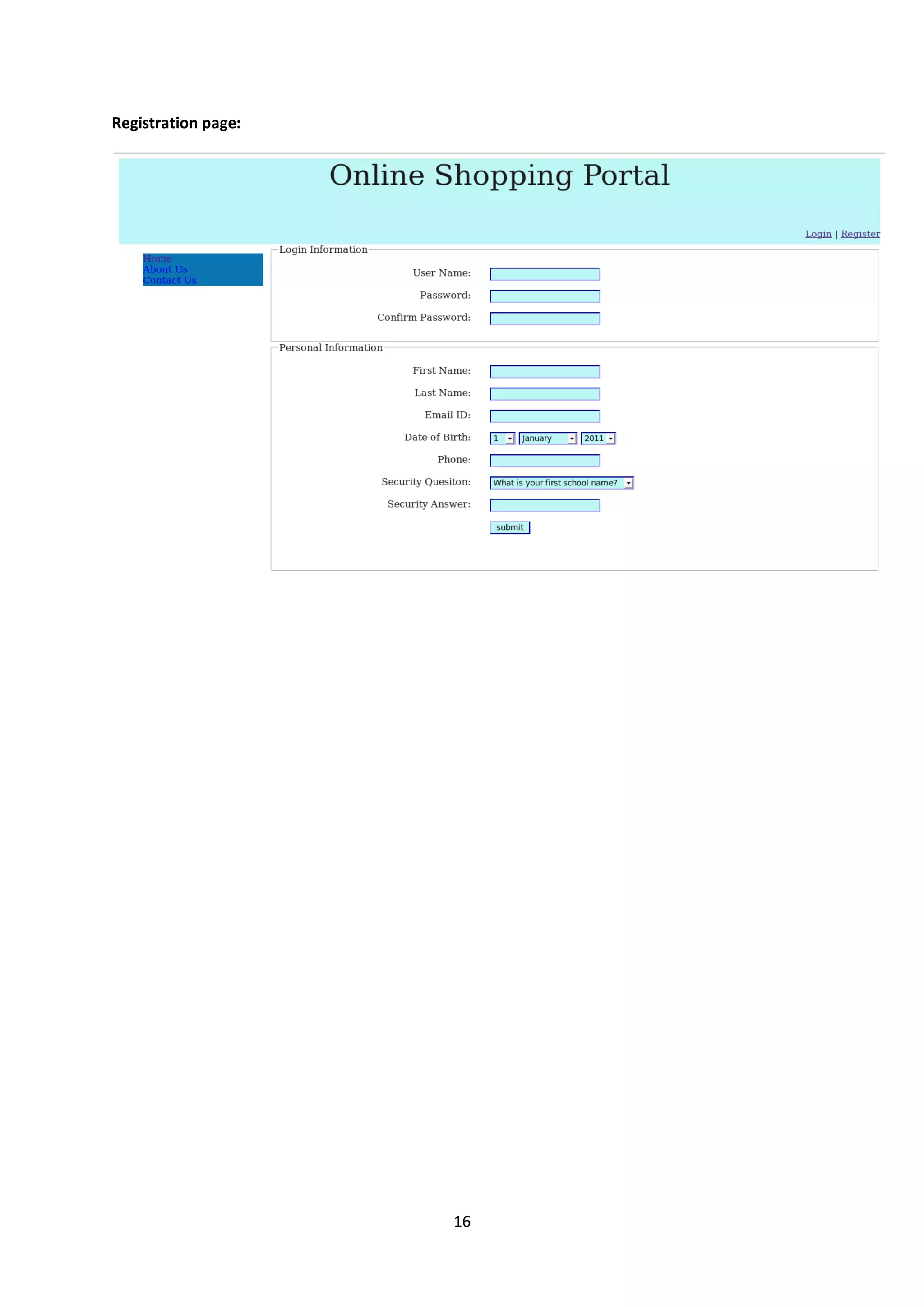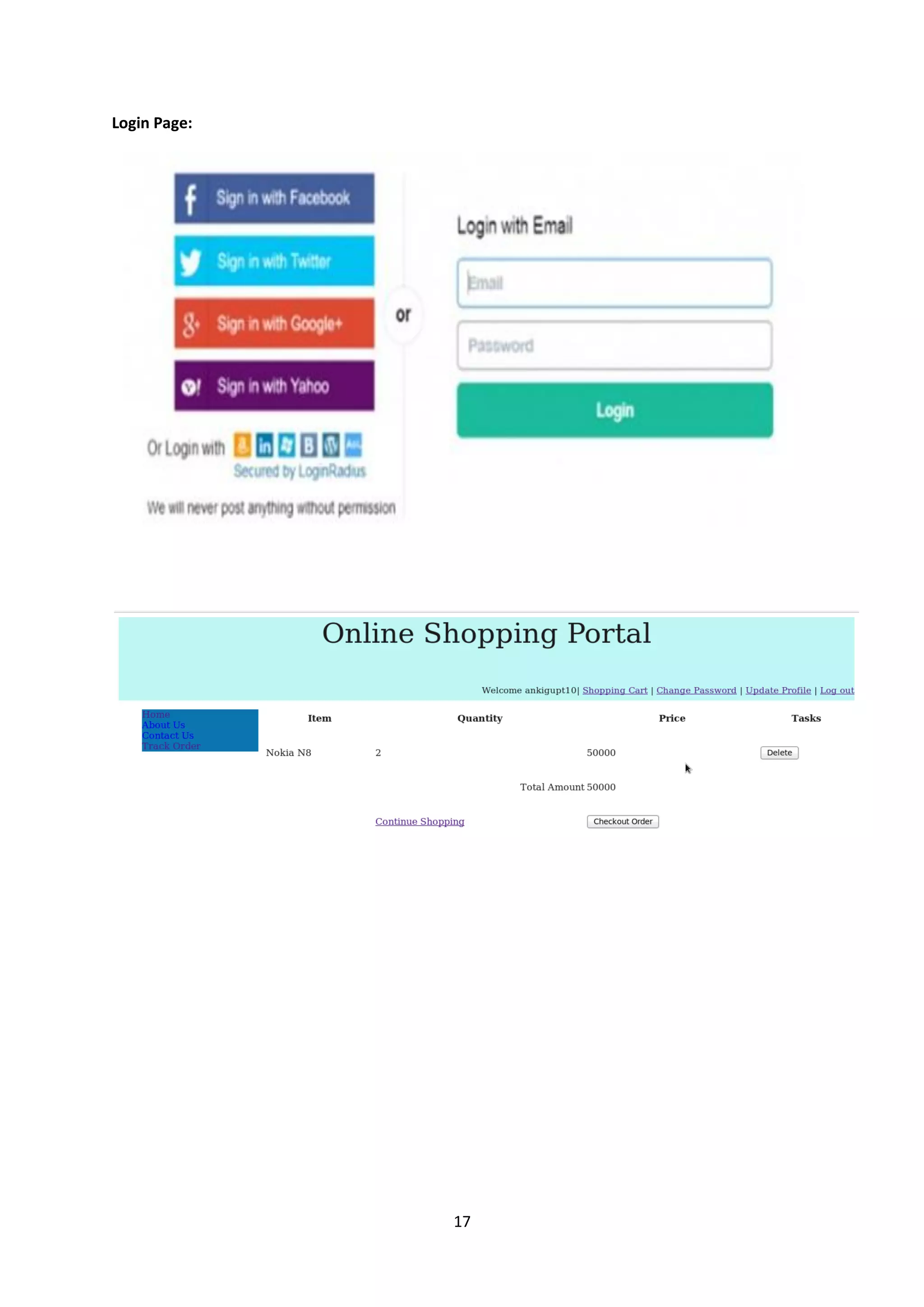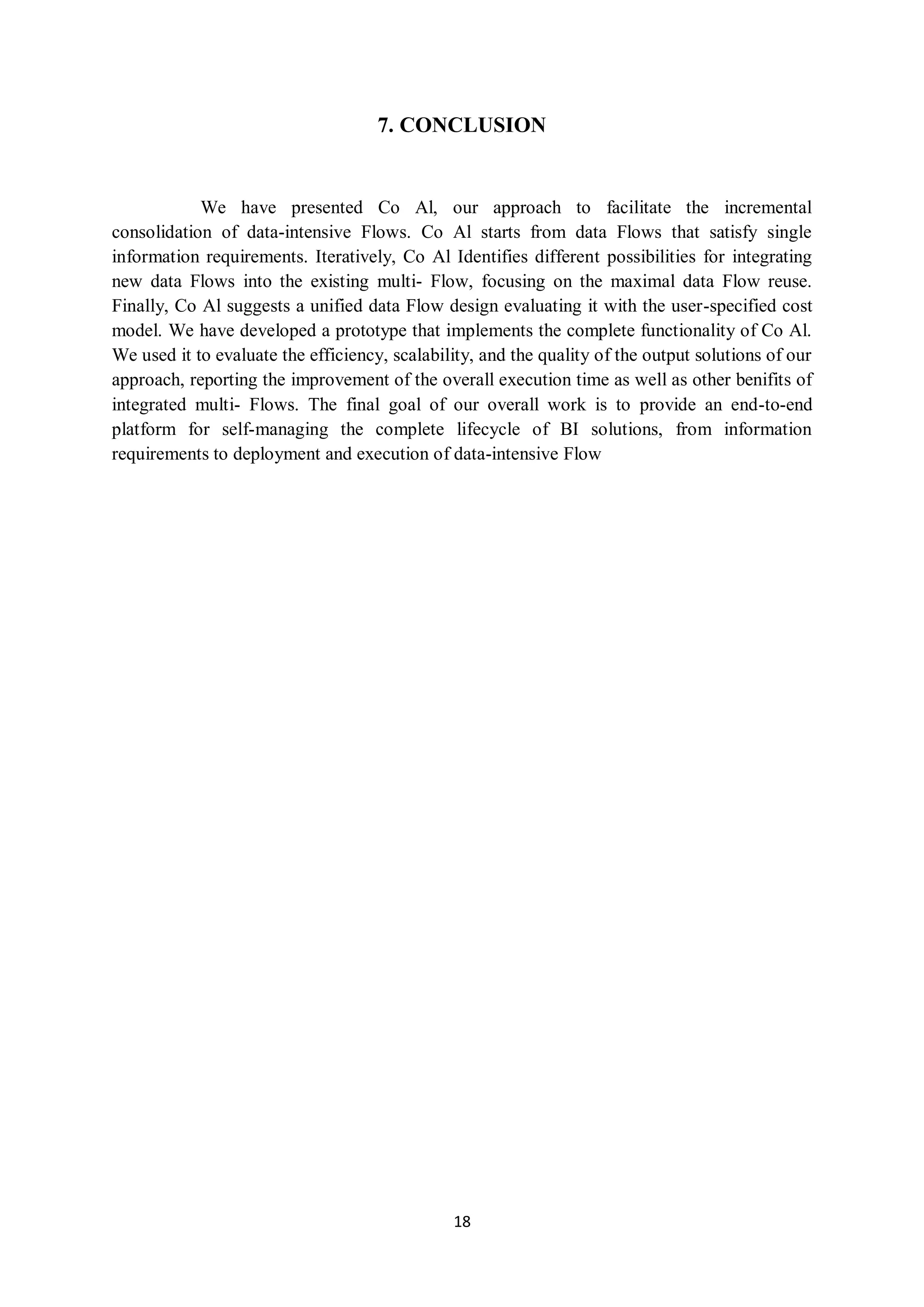The document describes an internship report submitted by K. Sireesha at NanoMindz Technologies Pvt. Ltd. in Vishakapatnam from May 8, 2017 to June 7, 2017 to fulfill the requirements for a Bachelor of Technology degree in Computer Science and Engineering. The report provides an overview of the organization, outlines the learning objectives and weekly activities during the internship, and covers topics related to .NET framework, C# programming, web development, and a project completed during the internship.
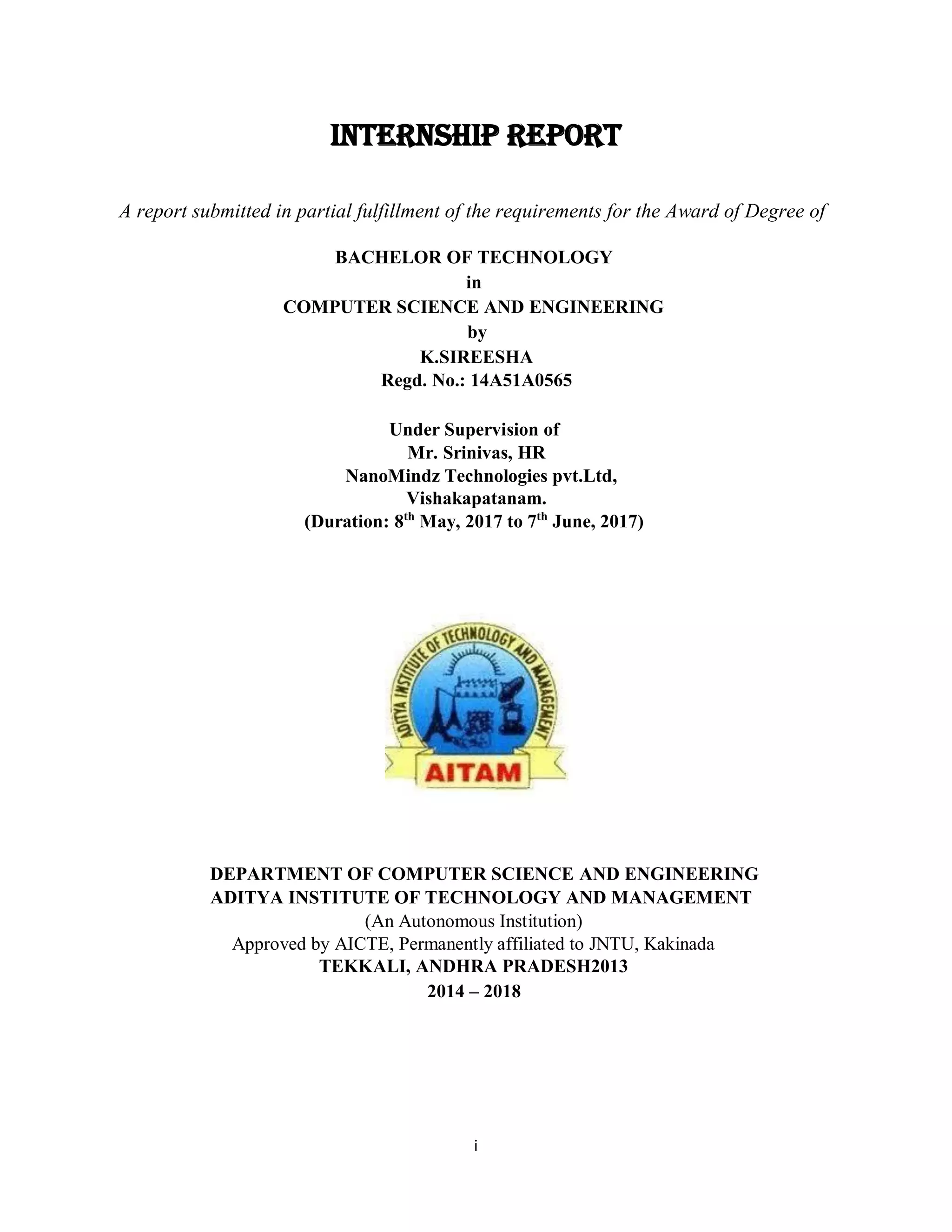
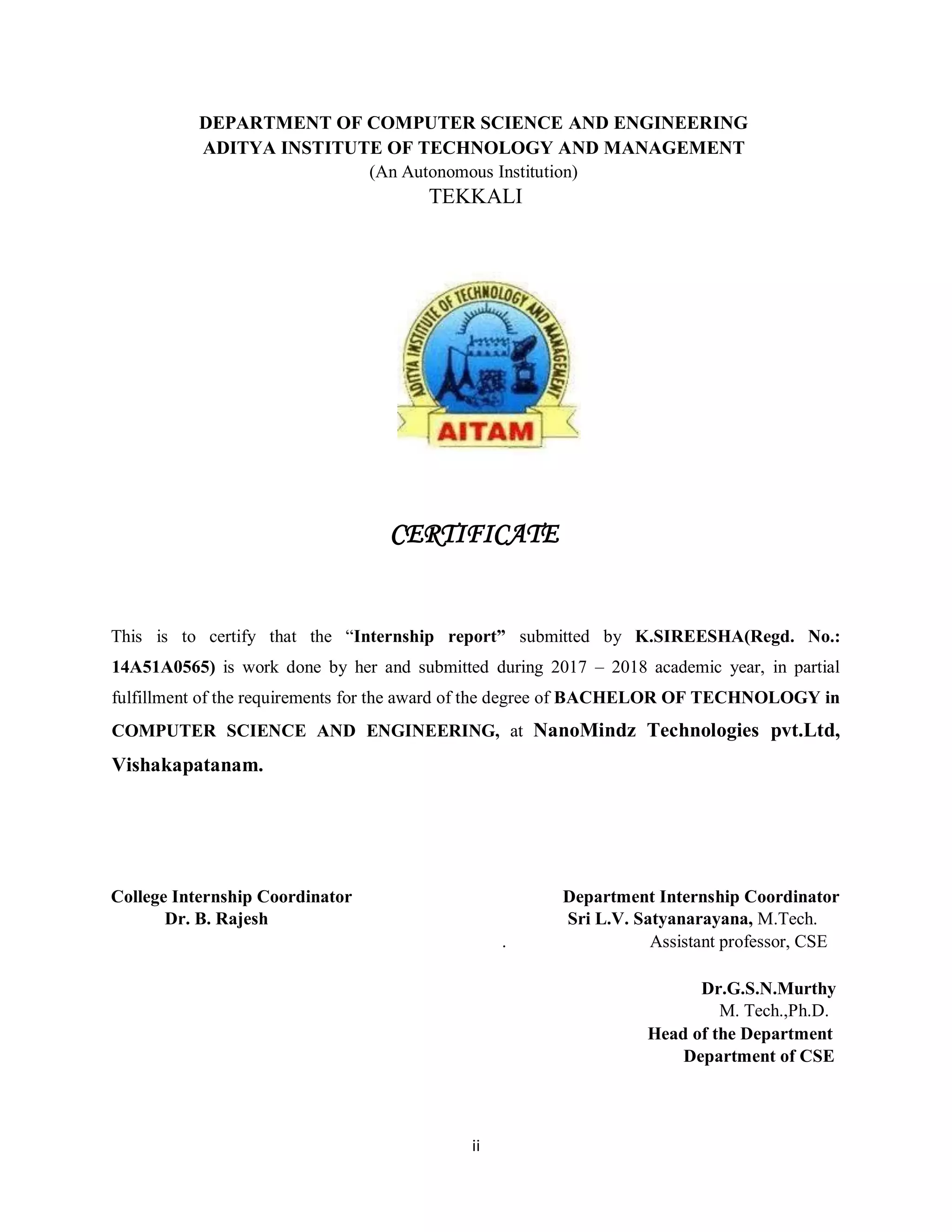
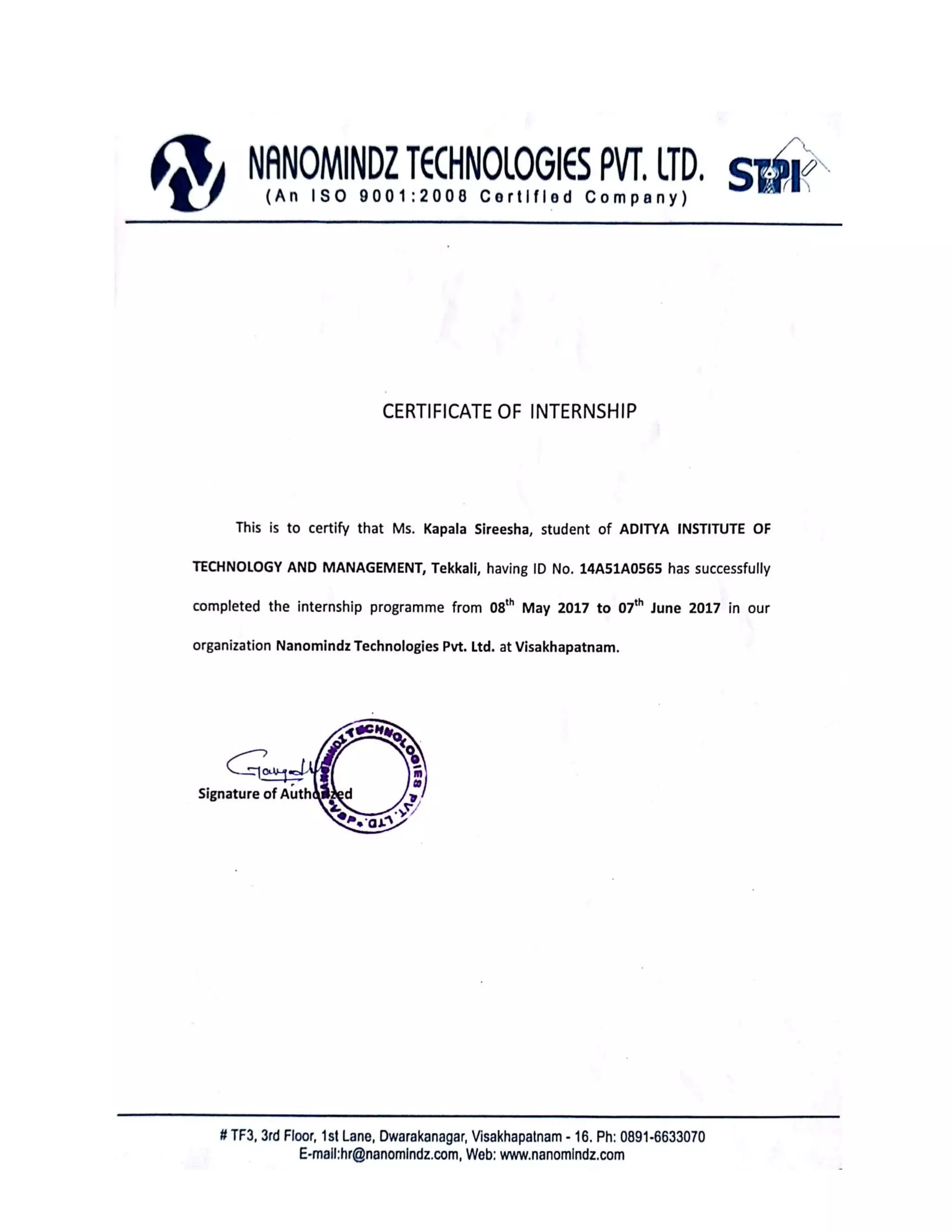
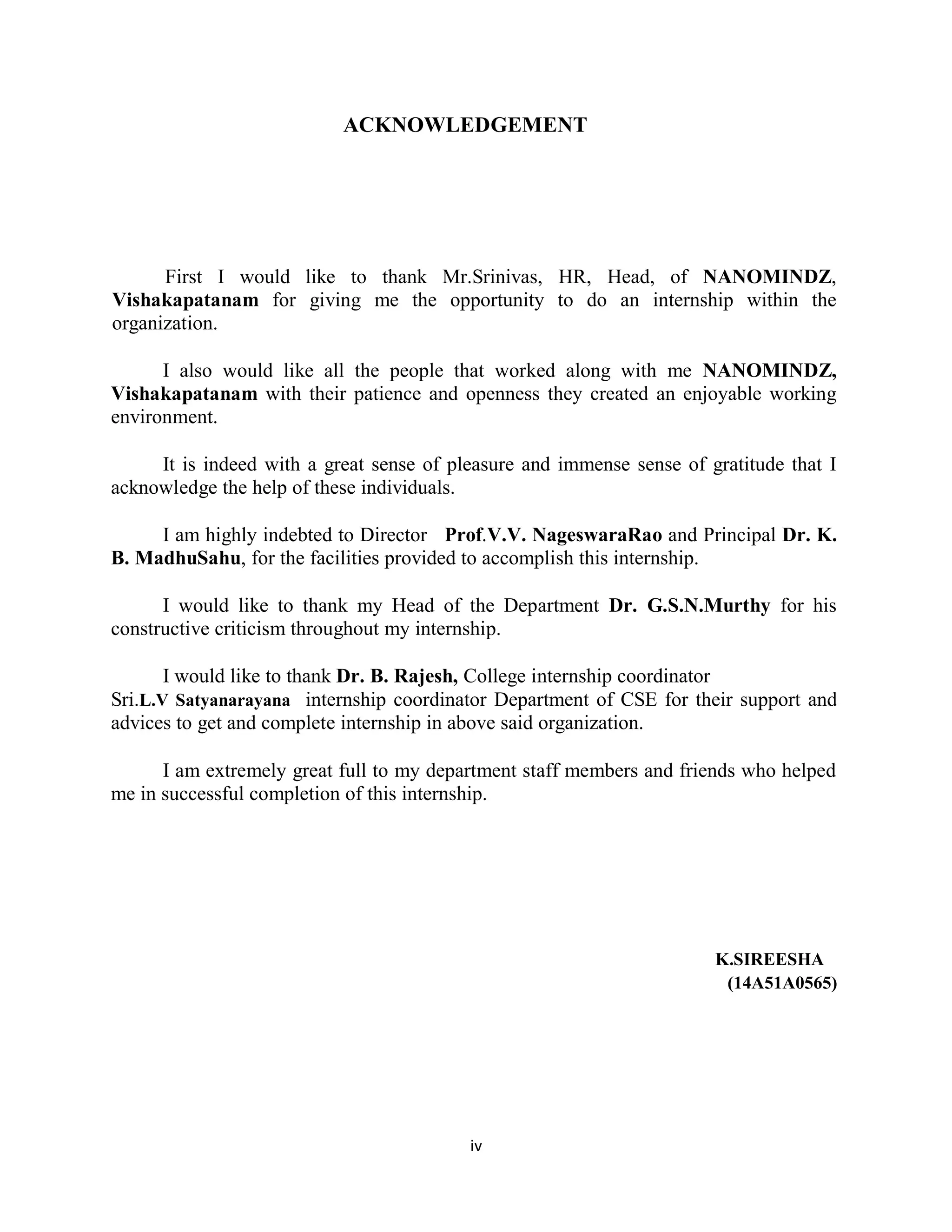
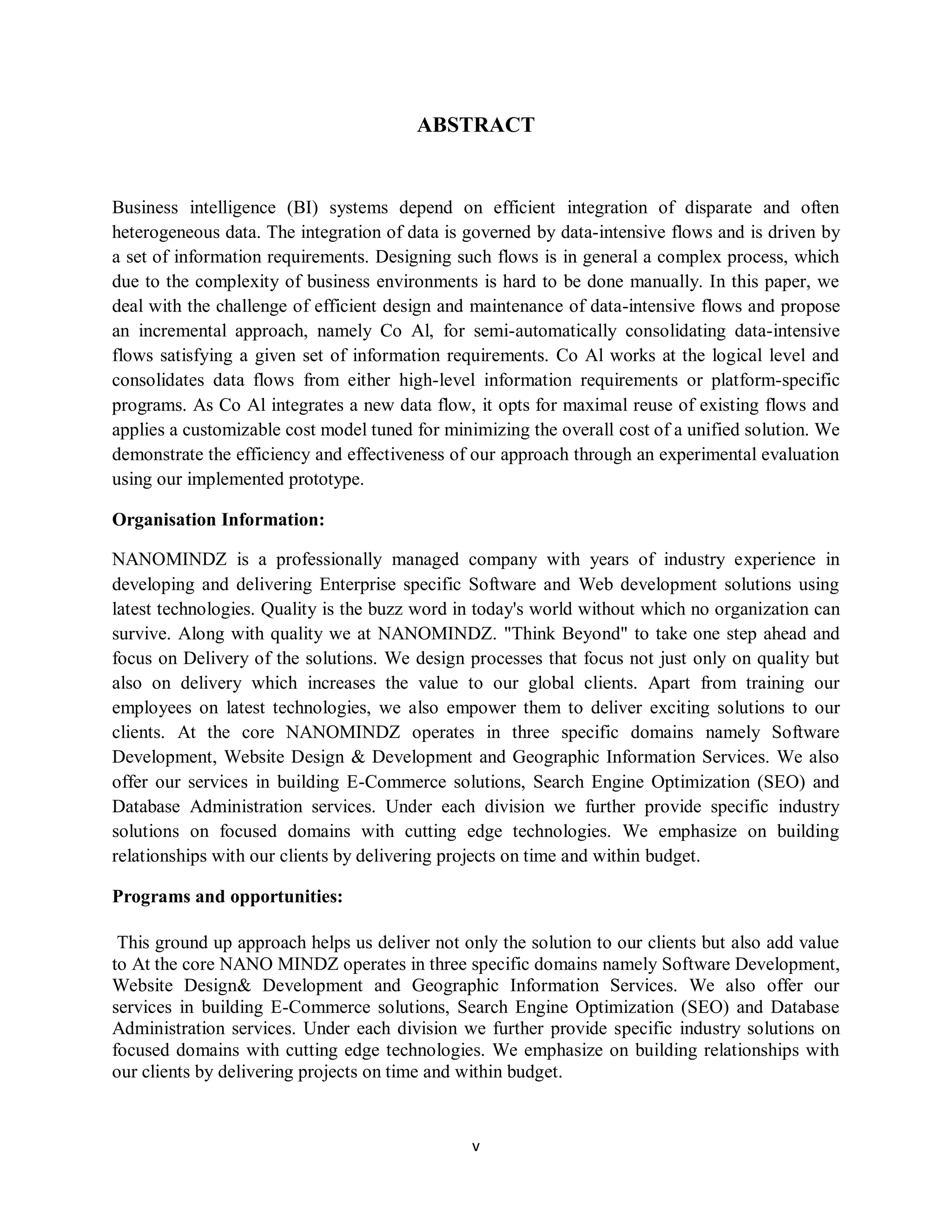
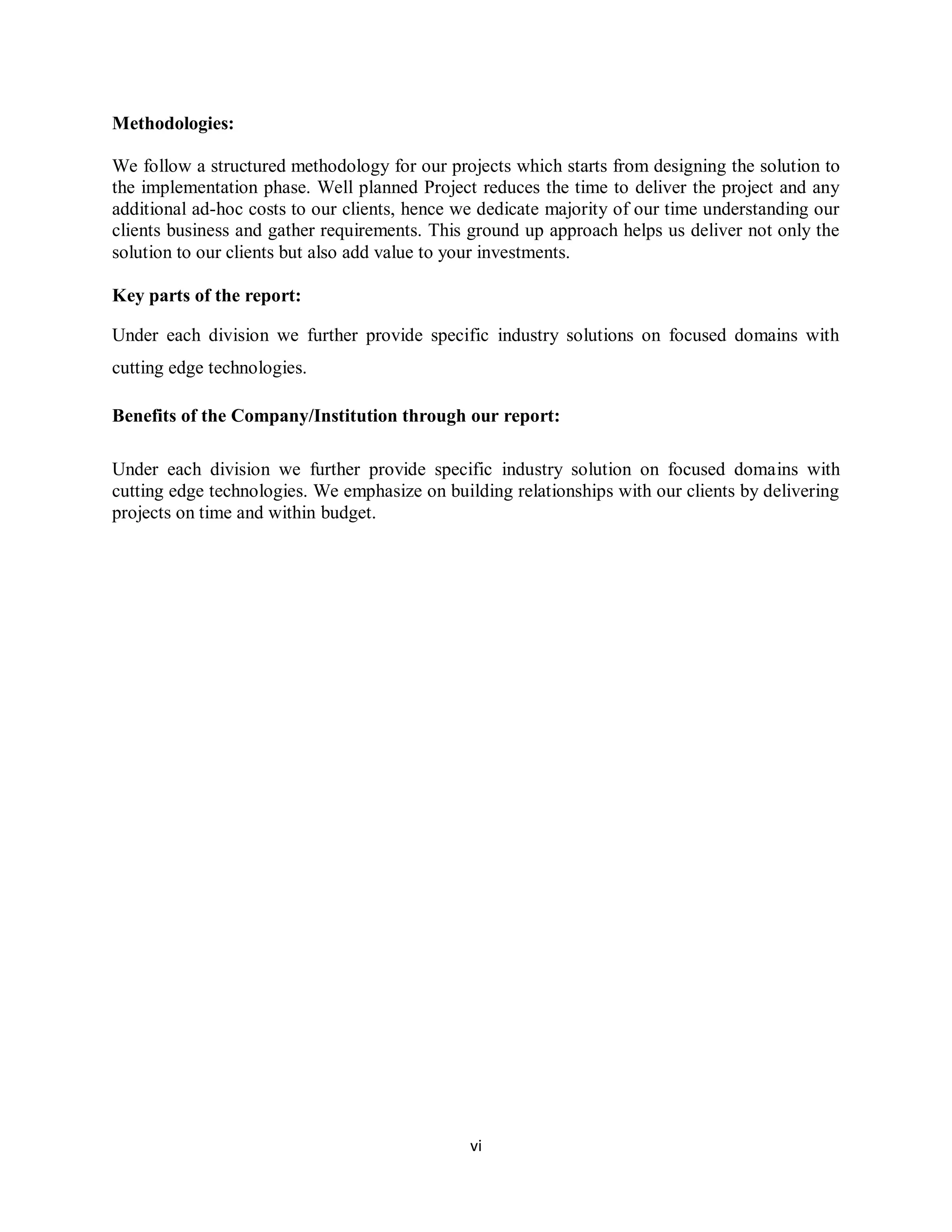


![ix
WEEKLY OVERVIEW OF INTERNSHIP ACTIVITIES
1
st
WEEK
DATE DAY NAME OF THE TOPIC/MODULE COMPLETED
8/05/17 Monday Introduction of .NET frame work
9/05/17 Tuesday Features of .NET { IDE,CLR,CTS}
10/05/17 Wednesday Introduction of C# .NET
11/05/17 Thursday Introduction of console application
12/05/17 Friday Continuing console applications
13/05/17 Saturday Understanding different types of class and collection
2
nd
WEEK
DATE DAY NAME OF THE TOPIC/MODULE COMPLETED
15/05/17 Monday Introduction to windows application
16/05/17 Tuesday Understanding controls like [label, button] etc.,
17/05/17 Wednesday Continuing understanding controls
18/05/17 Thursday Introduction to windows services
19/05/17 Friday Continuing windows services
20/05/17 Saturday Introduction to class libraries](https://image.slidesharecdn.com/internship-report-sample-61-220728131934-8860e6db/75/Internship-Report-sample-6-1-pdf-9-2048.jpg)
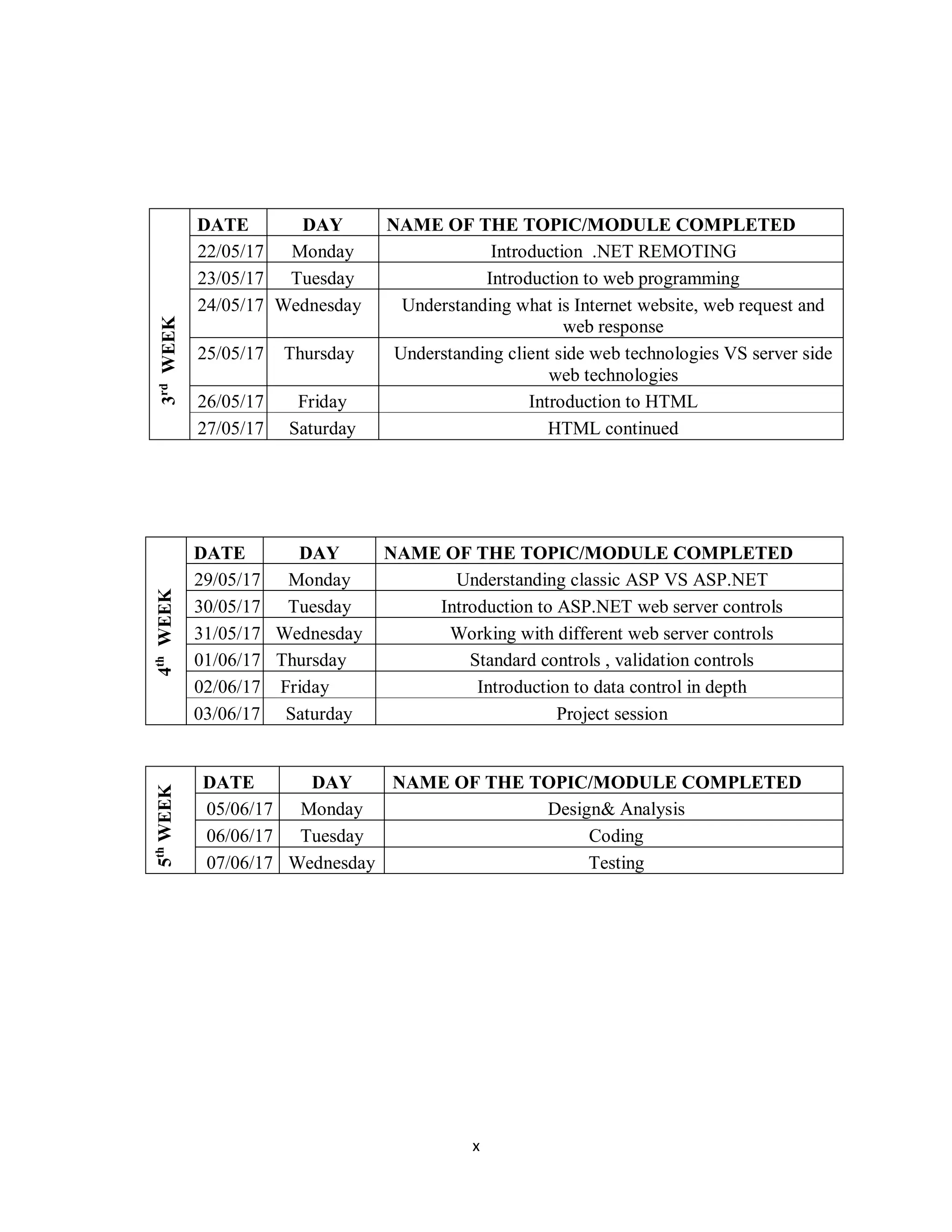
![1
1. INTRODUCTION
The complexity of business environments constantly grows, both with regard to the amount
of data relevant for making strategic decisions and the complexity of included business
processes. Today’s dynamic and competitive markets often imply rapid (e.g., near real-time)
and accurate decision making. Relevant data are stored across a variety of data repositories,
possibly using different data models and formats, and potentially crossed with numerous
external sources for various context aware analysis. A data integration process combines data
residing on different sources and provides unified view of this data for a user [1]. For
example, in a data warehousing (DW) context, data integration is implemented through
extract-transform- that extracts, cleans, and transforms data from multiple, often
heterogeneous data sources and Finally, delivers data for further analysis. There are various
challenges related to data Flow design. Here we consider two: design evolution and design
complexity.
A major challenge that BI decision-makers face relates to the evolution of business
requirements. These changes are more frequent at the early stages of a DW design project and
in part, this is due to a growing use of agile methodologies in data Flow design and BI
systems in general. But changes may happen during the entire DW lifecycle. Having an up-
and-running DW system satisfying an initial set of requirements is still a subject to various
changes as the business evolves. The data Flows populating a DW, as other software
Artefacts, do not lend themselves nicely to evolution events and in general, due to their
complexity, maintaining them manually is hard. The situation is even more critical in today’s
BI settings, where on-the-fly decision making requires faster and more efficient adapting to
changes. Changes in business needs may result in new, changed or removed information
requirements. Thus having an incremental and agile solution that can automatically absorb
occurred changes and produce a Flow satisfying the complete set of requirements would
largely facilitate the design and maintenance of data-intensive Flows.
In an enterprise environment data is usually shared among users with varying technical skills
and needs, involved in different parts of a business process. Typical real-world data-intensive
workloads have high temporal locality, having 80% of data reused in a range from minutes to
hours. However, the cost of accessing these data, especially in distributed scenarios, is often
high. At the same time, intertwined business processes may also imply overlapping of data
processing. For instance, a sales department may analyze the revenue of the sales for the past
year, while Finance may be interested in the overall net profit. Computing the net profit can
largely benefit from the total revenue already computed for the sales department and thus, it
could benefit from the sales data Flow too. The concept of reusing partial results is not new.
Software and data reuse scenarios in data integration have been proposed in the past, showing
that such reuse would result in substantial cost savings, especially for large, complex business
environments. Data Flow re use could result in a significant reduce in design complexity, but
also in intermediate Flow executions and thus, in total execution time too.](https://image.slidesharecdn.com/internship-report-sample-61-220728131934-8860e6db/75/Internship-Report-sample-6-1-pdf-11-2048.jpg)
